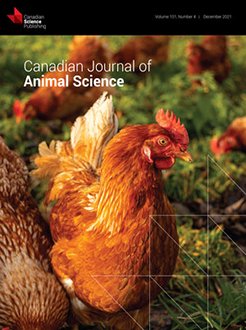LUMAN/CREB3 is a stress regulatory gene that affects the activity of the hypothalamic–pituitary–adrenal axis in mice and presents a promising avenue for exploring variable stress-responsiveness in pigs. Pigs with similar characteristics to LUMAN-deficient mice, including greater resilience to stress and receptivity to human handling, would be valuable in the pork industry from animal welfare and production efficiency perspectives. We previously identified eight genetic variations and five haplotypes throughout the LUMAN locus in Yorkshire pigs. In this study, we analysed associations between LUMAN variations with behavioural stress response during three tests (open field test, novel object test, and human approach test), physiological stress responsiveness (cortisol), and carcass/meat quality measurements from purebred Yorkshire pigs. Haplotypes A1 and A2 were associated with decreased activity levels in novel environments and greater plasma cortisol concentrations at slaughter. Haplotype A1 was associated with lower carcass scratch scores and meat with lower cooking losses and greater tenderness. Haplotypes B1 and B2 were associated with the opposite traits including increased activity levels in novel environments and characteristics for lower meat quality including greater cooking losses, lower marbling, and paler coloured meat. We conclude that DNA variations in the LUMAN locus could potentially be used as genetic markers for stress resistance and meat quality in pig breeding.
How to translate text using browser tools
16 April 2021
Genetic variation in LUMAN/CREB3 and association with stress and meat quality traits in Yorkshire pigs
Shayla Larson,
Aitor Arrazola,
Rebecca Parra,
Krysta Morrissey,
Tess Faulkner,
Mohsen Jafarikia,
Ira Mandell,
Renée Bergeron,
Ray Lu
ACCESS THE FULL ARTICLE
It is not available for individual sale.
This article is only available to subscribers.
It is not available for individual sale.
It is not available for individual sale.





